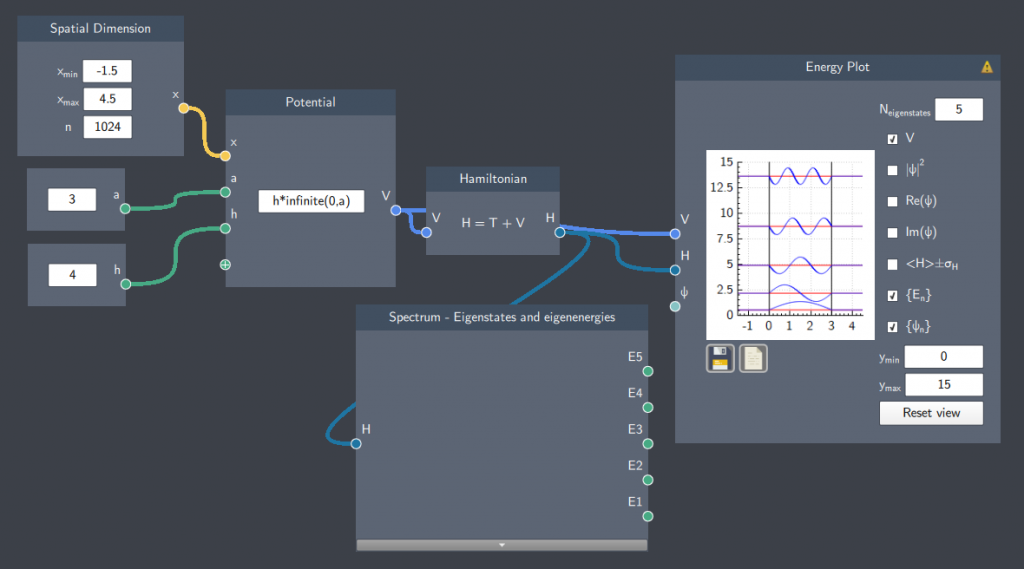Hamiltonian
Description
The Hamiltonian node defines the total energy of the system. It is the first building block to get the energy spectrum of a system.

Input
The node has the following input:
- Potential (V): As the Hamiltonian is the sum of the potential and kinetic energy of a system, it requires a potential function defined in the Potential node as its input.
Content
The content in the node shows what is being calculated. It is the sum of the kinetic and potential energy. The kinetic part $T = \frac{-\hbar^2}{2m} \frac{\partial^2}{\partial x^2}$ is calculated from the spatial dimension $x$, while the Potential ($V$) is taken from the Potential node.
Output
After the input is provided, the node gives the following output:
- Hamiltonian (H): The Hamiltonian of the defined system.
Example
In the example below, the Hamiltonan of an infinite well potential is calculated to plot the eigenstates and calculate the spectrum of eigenenergies.


